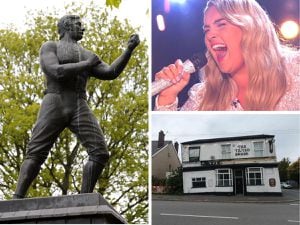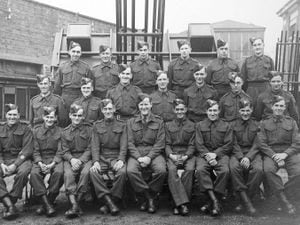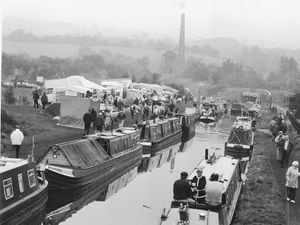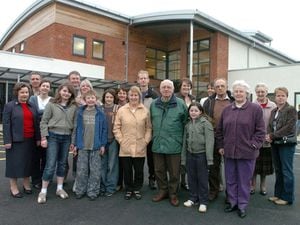Village school near Bridgnorth became a battleground
Astley Abbotts, a peaceful village near Bridgnorth, was the site of a great and bitter battle – over the future of the village's closed school.
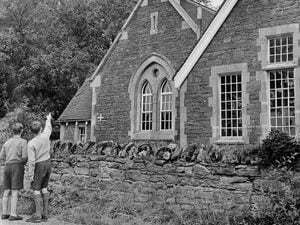
A dip into our archives brings an image of the school at the end of its life, dating from July 1962, with the caption explaining: "Astley Abbotts School, near Bridgnorth, closes today because so few children live in the area... Most of the children will move to St Leonard's School, Bridgnorth."
The headmistress was Miss Eleanor Teece, who was retiring, and there was also a Miss Frances Cox. At the time of the closure, according to our archives, there were 18 pupils.
Incidentally, does anybody know the correct spelling of Astley Abbotts? It seems Abbotts is the standard way, but if the derivation comes from abbot, as in the superior of an abbey of monks, then the correct spelling should be one "t."
Anyway, moving on, the closure of the school was not the end of the story for the village, because the disused building was to become the focus of a battle which was aired in the House of Commons.
The then Bridgnorth Rural District Council decided to serve a compulsory purchase order on the school. Cue uproar in Astley Abbotts. A meeting in the village on September 8, 1965, condemned the council's action and decided to object to the Ministry of Housing.
The church warden and senior trustee of the school, Captain George Thompson, of Dunval Hall, had told the meeting that the intention was to sell the old CofE school and use the interest from the proceeds for the benefit of the young people of the parish under a properly constituted local management committee.
Contrast
In contrast to that local plan, the villagers were unsure what the council had in mind, although there was talk of making it "a unit of special housing accommodation."
Things became clearer in 1966 at a local inquiry into the council's plan to acquire the school and school house for housing what were described at the time as "problem families."
Captain Thompson told that inquiry that the trustees had no objection to that use, but argued that the only way to secure a fair price was by offering the school at a public auction, the proceeds of the sale then being held in trust for the benefit of local children.
There were 253 objectors to the council's plan to acquire the property compulsorily.
Villagers were optimistic that they had won the argument when the inquiry inspector recommended that the CPO should not be confirmed, but then the Ministry of Housing dropped a bombshell by overruling the inspector's report, and upholding the council's decision.
The matter was raised in the House of Commons in November 1966 by the local MP, Jasper More, who said the compulsory purchase of the school should be remembered as an example of how not to deal with such cases, and had left a sense of grievance and injustice among villagers.
Speaking on the motion for the adjournment of the House, he said the school had been provided by a private family. It had trustees and a trust deed, the latter providing that in the event of the school being closed, it should be sold and the proceeds devoted to the benefit of the village.
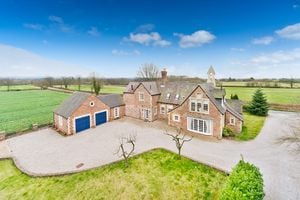
On the other hand, he said, the council had been trying for about four years to solve the problem of housing a large family for which it had responsibility. All the sites it had looked at had failed to get planning permission, and then the matter became urgent in July 1965 when the family was burned out of its existing accommodation.
What was particularly objected to was that the school was to be used for housing a family from outside the village.
However Mr More – he later became Sir Jasper – recognised he was now fighting a lost cause on behalf of villagers.
"There may be nothing now the Minister can do to redeem the errors perpetrated in this case," he told the Commons.
He added that he could only express the hope that the case would be remembered as an example of how not to deal with cases of this kind.
The council use continued for many years. In December 1980 the former school was reported to be housing a family of 11.
Twist
The roof and first floor were gutted in a fire in January 1998, forcing out the Locke family who lived there, and in March 1999 the building was on the market, leading to Bridgnorth District Council pocketing a tidy sum of £158,000.
This was to lead to yet another twist in the saga.
The trustees of Astley Abbotts Educational Foundation, the charity which had received £2,000 when the building was compulsorily purchased in the 1960s, asked the council to consider handing over some of the money it had made from 35 years of rent income as well as the sale.
But in July 1999 district councillors said they had no legal obligation to meet the request, and turned down the charity's application.
Not all agreed. Bill Parr, the councillor for Astley Abbotts area, said the district council had a moral obligation to hand back some of the cash.
“The council has made a huge profit and to give back some of that money would show the residents of Astley Abbotts that we are a caring authority,” he said.
He also reminded members that the house was put into trust by former owner Sir Henry Thomas Tyrwitt, of Stanley Hall, Astley Abbotts, in 1873, and it was his wish that the property be an educational asset.
It was certainly an appreciating asset. When it was on the market more recently in 2012 it was described as "a delightful five-bedroom country residence" – with an asking price of £660,000.


